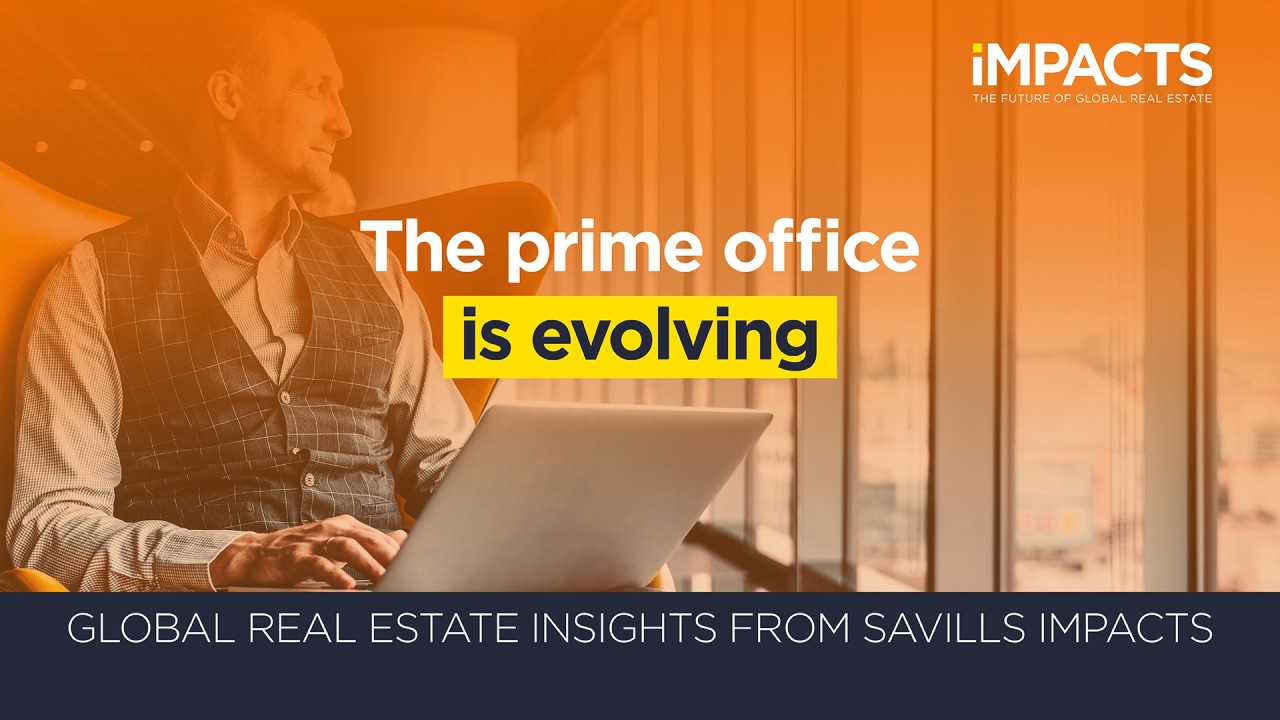
Savills
474,580 followers
May 8, 2025
What does a prime office look like today? This month, we explore how the office is being reimagined to meet rising expectations around sustainability, workplace experience and technology. We examine how the construction sector is tackling a triple challenge of tight financing, rising costs and skills shortages. And we analyse the growing availability of real estate debt. We’re also pleased to announce the launch of the Impacts microsite in French – the result of months of hard work by Anne-Lise Seurat and her team. Visit the site to read Impacts in French.

Paul Tostevin
Head of Department, Director of World Research at Savills
3,055 followersFollow

Join us on the 3rd of June for the launch of our 2025 Impacts publication. Through the lens of our 2025 theme ‘Adapt’ – we will explore key topics influencing real estate, including geopolitical risk, the occupier landscape, how wealth flows are shifting, and climate resilience.
Secure your spot, register for the webinar here.

The prime office is being redefined. No longer just a workplace, it’s now a hub for collaboration, innovation and talent development. But what are occupiers looking for in 2025?
We’ve conducted a global survey of tenants, landlords and developers to understand their priorities. As Sarah Brooks explains, the results show that proximity to transport is the most important factor. And that’s reflected in rents. Our regression analysis shows that across New York, London and Tokyo, for every five minutes by foot that a prime office is closer to a major transport hub, there’s an average rent increase of 6.7%.
As well as traditional factors such as natural light, building security and floor-to-ceiling height, tenants’ other priorities include a building’s green credentials. In some markets, offices with the highest levels of environmental certification can attract a ‘green premium’ on rents.
Looking ahead, offices will need to adapt to demographic shifts, climate resilience requirements and technologies such as AI. The most successful won’t just respond to change – they’ll help lead it.
Discover the features occupiers are seeking in prime offices.

Global construction faces a tougher environment: persistent high costs, tight financing and skills shortages.
Build costs continue to outpace the consumer price index in many markets – affecting the viability of projects. The cost of construction finance is a major hurdle. With interest rates still relatively high and lenders demanding more security, alternative funding sources – such as institutional capital – are increasingly vital.
Labour is another constraint: in developed markets, construction struggles to attract young talent. And in some developing economies, such as India, seasonal migration disrupts supply.
The industry is exploring a range of solutions. These include early contractor involvement in scoping and de-risking projects and considering alternative contract forms to reduce prices. Modular and offsite construction methods are also gaining traction, cutting build times and site labour requirements.
Despite these headwinds, opportunities remain. Redevelopment and retrofitting driven by ESG ambitions and a lack of prime office supply in key markets is helping drive demand, for example.
Read more on the challenges facing construction – and how the industry is responding.

Real estate debt markets are booming, even as equity remains subdued, writes Oliver Salmon. Over 60% of respondents to the US Real Estate Roundtable Survey report improved debt capital availability in the past 12 months, with even greater optimism for 2025.
But it’s not banks fuelling this surge – instead, alternative lenders and institutional investors are stepping in. Institutions are attracted by factors including positive inflation-adjusted returns (supported by a rebasing in interest rates) and margins that compare favourably with corporate credit.
Global debt fund commitments hit $32bn in 2024 (up 16% year-on-year) and accounted for 35% of all real estate fundraising in Q1 2025.
The challenge? Deploying all this capital. Deal flow remains muted, intensifying competition for the best assets. Investors are particularly keen to finance prime buildings. This is squeezing margins and pushing LTVs higher – up 8 percentage points in the US since the beginning of 2024, for example.
There’s no shortage of real estate debt. The challenge for investors is finding properties they want to finance.
Read more on the increased availability of real estate debt.
Impacts is also available as an email newsletter, covering more issues relating to global real estate insights. Sign up to receive it directly to your inbox here.

Paul Tostevin
Head of Department, Director of World Research at Savills
3,055 followersFollow
Paul Tostevin heads the Savills World Research team and is one of the lead directors of Impacts, Savills flagship global research programme. His work analyses how economic, environmental, demographic and technological trends influence real estate markets, today and in the years to come.
This newsletter is for general information only and should not be considered professional advice. Savills accepts no liability or responsibility for any direct, indirect or consequential loss arising from the use of, reference to or reliance on, this newsletter or its content.



